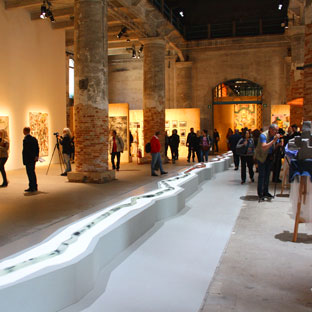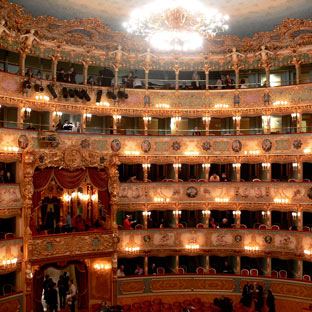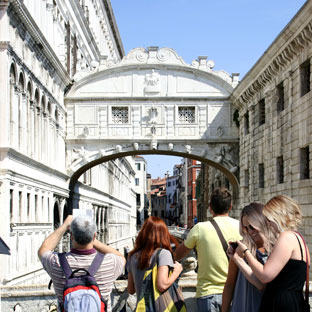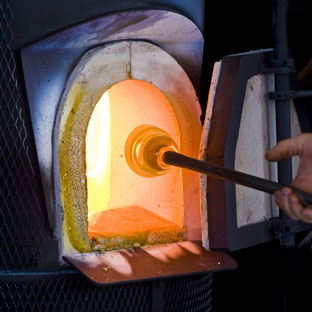[Photo on top: Ponte di Rialto. © Ph. Leonardo Bosello, 2021]
The following are Live-Venice’s suggestion on how to organize your visit in Venice if you are in town just for a few days. Our magazine is entirely produced by Venetians and our suggestions come from a deep knowledge of the city; however, we encourage you to follow your tastes and take your time.
As a general advice, always try to reserve your visit to museums and monuments in advance, in order to avoid long lines and not to waste time. It is almost always possible to reserve on-line: see the complete list of Venice museums with the links to the official web sites and to the official ticket page. Moreover, Live-Venice articles provide information on how to reserve and the links to the museums. At the end of this article you will find some useful links as well.
Another good idea is to contact an authorized tour guide for a guided tour. There is a wide choice of tours suitable for any age, with many itineraries and focuses. Moreover, a guided tour will allow you to optimize time and discover more things than you would on your own.
If you are an expert tourist guide, you may find job offers for tourist guides on Jooble.
Last but not least: take a look at the what’s on in Venice during your stay. Venice offers many events of different kinds, some of them may be the right ones for you!
> go to the list of the events and exhibitions in Venice up to December 2023 <
If you want to know more about Venice, its history and territory, how to move around, and recommended behavior, and for an informed visit, please read Venice in a nutshell article.

View on Rio di San Barnaba. © Ph. Leonardo Bosello, 2021
If you are here only for two or three days, you will need to choose only a few among the thousands beauties of Venice. Our advice is to alternate between visiting museums and monuments and walking around the city. This will allow you to see part of the artistic heritage of the city while at the same time enjoying the uniqueness of the island.
A more-than-three-day visit will allow you to better understand Venice by visiting also some of the smaller islands of the lagoon, or by taking part in original and fun activities.
The following visit program contains only a selection of attractions that can be visited in a few days, but of course our advice is to spend at least one week in Venice!
Where indicated, the times of visit are only an approximation and may vary depending on visits to museums, churches or else.
FIRST DAY
MORNING: SAN MARCO AREA
Piazza San Marco–the only “Piazza” (square) in Venice (other squares are called “campo”)–has been the political, economic, and religious heart of the city for centuries. The most important buildings in town face the Piazza, which is undoubtedly the most visited place in Venice.
The Basilica di San Marco is a masterpiece from the eleventh century, and the inside is completely covered with golden mosaics—a real treasure indeed! Visit takes at least 30 min. Holiday and Sunday mornings are dedicated to the cult.
Palazzo Ducale (Doge’s Palace) was the main headquarters of the government of the city and the residence of the Doge (the governor of the Serenissima Republic). Here, a guided tour can be helpful to better appreciate this place so full of art and history, and will give you the opportunity to visit a larger area of the building. Some of the itineraries take you through the renowned Bridge of Sighs and to the Prisons.
A San Marco monuments pass is available and includes all the museums in the area (but not the Basilica): the Doge’s palace, the Correr museum, the Venice museum of Archeology, and the Marciana Library.

San Marco, Palazzo Ducale. © Ph. Leonardo Bosello, 2021
AFTERNOON: A WALK FROM SAN PIETRO DI CASTELLO TO RIALTO
From San Marco, walking along the Basin and then along the picturesque Via Garibaldi, you can easily reach San Pietro di Castello, one of the most ancient islands in Venice. From here, a long walk through the district of Castello will lead you to Rialto area. Along the way, you will discover wonderful and still not too crowded places, like the cloister of San Francesco della Vigna, and with an inestimable artistic and architectonic value, like the majestic basilica of SS. Giovanni e Paolo or the small church of Miracoli.
Once arrived at Rialto bridge, you can visit the rooftop terrace of the Fondaco dei Tedeschi (free admission, we strongly suggest to reserve the visit on-line) which allows a unique point of view on the Gran Canal, Rialto bridge, and on the roofs of Venice. Otherwise, you can cross Rialto bridge and have an aperitif in one of the bars facing the Canal Grande or in the narrow streets around the market area, and take a look at this interesting and important part of the city.

Arsenale, “ground door”. © Ph. Leonardo Bosello, 2022
ADVERTISEMENT
SECOND DAY
MORNING: MUSEUM AND GONDOLA RIDE
We suggest that you spend the morning visiting another of the many museums or exhibitions in Venice. Almost every one of them are located in splendid historical buildings. The Natural History Museum (Santa Croce) and the Naval History Museum are particularly appreciated by younger visitors.
After visiting the museum, a gongola ride is a good idea to relax and enjoy the uniqueness of the city. The gondola tour lasts 30 minutes or more, and the price starts from 80,00 euros during the day, and 100,00 in the evening, for the whole boat (which carries up to 6 people). Gondola “stations,” are almost everywhere in Venice, and gondoliers are always happy to explain the itinerary and the attractions you will see during the tour.

Squero of San Trovaso. © Ph: Leonardo Bosello, 2021.
AFTERNOON: A WALK THROUGH DORSODURO, SANTA CROCE, AND SAN POLO DISTRICTS
A long walk in the districts of Dorsoduro, Santa Croce, and San Polo will let you experience the characteristic maze of Venetian streets (yes, where GPS does not work well!), going through beautiful palaces, and ending from time to time in “campi” and “campielli” either very lively—with bars and kids playing after school—or very quiet and silent.
The Basilica dei Frari, the church of Madonna della Salute, the two “Scuola grande” of San Giovanni Evangelista and San Rocco, the “squero” of San Trovaso (where gondolas and traditional boats are built), the Gallerie dell’Accademia, the Peggy Guggenheim Collection, Ca’ Rezzonico museum, Ca’ Pesaro museum, and the main university venues, are only some of the many museums, churches, and attractions in this area, which is actually pretty small.
THIRD DAY
FULL-DAY ITINERARY: THE ISLANDS OF MURANO, BURANO, AND TORCELLO AND THE DISTRICT OF CANNAREGIO
If you have more than two days, the islands of Murano, Burano, and Torcello are definitely places to be visited! Remember to go there as soon in the morning as possible, specially in summer, to avoid long lines for the vaporetto (water-bus) and enjoy a more peaceful visit.
If you wish to visit at least two of the three islands, and you need the vaporetto ticket, you should buy a 24-hour ticket, which costs less then three single rides (since you are going to need at least three vaporetto rides: Venezia-Murano, Murano-Burano, and Burano-Venezia).

Murano, Duomo. © Ph: Leonardo Bosello, 2022
Among the many attractions and landmarks in Murano, we like to name the seventh-century Duomo di Santa Maria e Donato, the church of San Pietro Martire, the Museo del Vetro (Glass Museum), and of course the glass-working demonstrations presented by many glass factories.
A visit to Murano may take 2 or 3 hours.
Reaching Murano takes 10 minutes by water-bus ACTV line 4.1 or 4.2 from Fondamente Nove stop.
Torcello is one of the most ancient islands in the lagoon, renowned for its economic, political, and cultural importance before the rise of Venice. The seventh-century Basilica di Torcello–decorated with one of the most important mosaic cycles in Northern Italy–stands as the heritage of the glorious past of the island. The basilica, the annexed church of Santa Fosca, the bell tower, and the Museum of Torcello, all close to each other, are the core of the visit.
A visit to Torcello may take 1 or 2 hours.
From Venice (Fondamente Nove stop) you can reach Torcello with vaporetto ACTV line n. 12, in 35 minutes.

Burano. © Ph: Leonardo Bosello, 2022.
Burano used to be a fishermen village. This beautiful small island where houses are all painted in different bright colors offers spectacular views of the lagoon. This and the reflections of the vibrant colors on the canals make Burano one of the most scenic and fascinating places in Venice. Among the things to see are the Museo del Merletto (Lace Museum) and the tenth-century church of San Martino Vescovo.
A visit to Burano may take 1.5 or 2.5 hours.
You can reach Burano from Venice (Fondamente Nove stop) in 45 minutes, and from Murano (Faro stop) in about 30 minutes, vaporetto ACTV line n. 12.

Campo and church Madonna dell’Orto. © Ph: Leonardo Bosello, 2022
Once you are back in Venice, from Fondamente Nove stop, you can visit Cannaregio district. Even avoiding Strada Nova, the busy street that leads directly to the train station, you will easily and quickly reach the ancient Jewish Ghetto, in the heart of the district. During the walk, you will pass by many remarkable churches and palaces, like the church of Madonna dell’Orto, a masterpiece of Venetian Gothic style, and discover many quiet and suggestive spots.
Finally, you can end your day–or start the evening–with an aperitif in one of the many bars and taverns of the lively Fondamenta della Misericordia and Fondamenta degli Ormesini, or head to the train station and take a vaporetto to San Zaccaria (San Marco).
The 24-hour ticket you have bought in the morning is still valid, so you can use it several times within the 24 hours. Taking vaporetto ACTV line n.1 from the Train Station to San Zaccaria allows you to see the whole Canal Grande from the water, with a good amount of time (about 45 minutes). We suggest—if possible—to seat on the prow seats.
FOURTH DAY

Kayaking in the lagoon. Ph courtesy Venice Kayak.
You can spend the fourth day deepening your knowledge of the city, both in the museums dedicated to the city or visiting some of the places you “skipped” before, like Rialto fish and vegetables market (open in the morning from Tuesday to Saturday), the Fenice Theater, the island of San Giorgio, the Giudecca, the Lido.
Another option is to visit some of the smallest and lesser known islands of the lagoon. They all have hidden treasures and are often a beautiful surprise. Many of these islands can be reached with the public transportation, vaporetto ACTV.
If the weather is nice, you can also consider some “lesser usual” activities, and maybe do something that can be experienced only in Venice. Here are some of our suggestions:
– Take a voga alla veneta (Venetian-style rowing) lesson through the canals, in the lagoon, or even on the Gran Canal.
– Rent a boat (with or without pilot, no license needed) and discover the lagoon on your own
– Get on a Kayak and visit the city and the lagoon from the water
– Rent a rickshaw and go around the Lido, among art nouveau villas and the WWF oasis along the beach.
USEFUL LINKS
veneziaunica.it web platform provides tickets and passes for many museums, churches, events, and public transportation: https://www.veneziaunica.it/en/e-commerce/services
To reserve the visit to the Basilica di San Marco:
www.basilicasanmarco.it/
For a Rowing lesson in the canals and the lagoon:
https://rowvenice.org
If you wish to rent a boat:
https://www.brussaisboat.it/en/
https://www.classicboatsvenice.com
Kayak tours:
https://www.venicekayak.com










